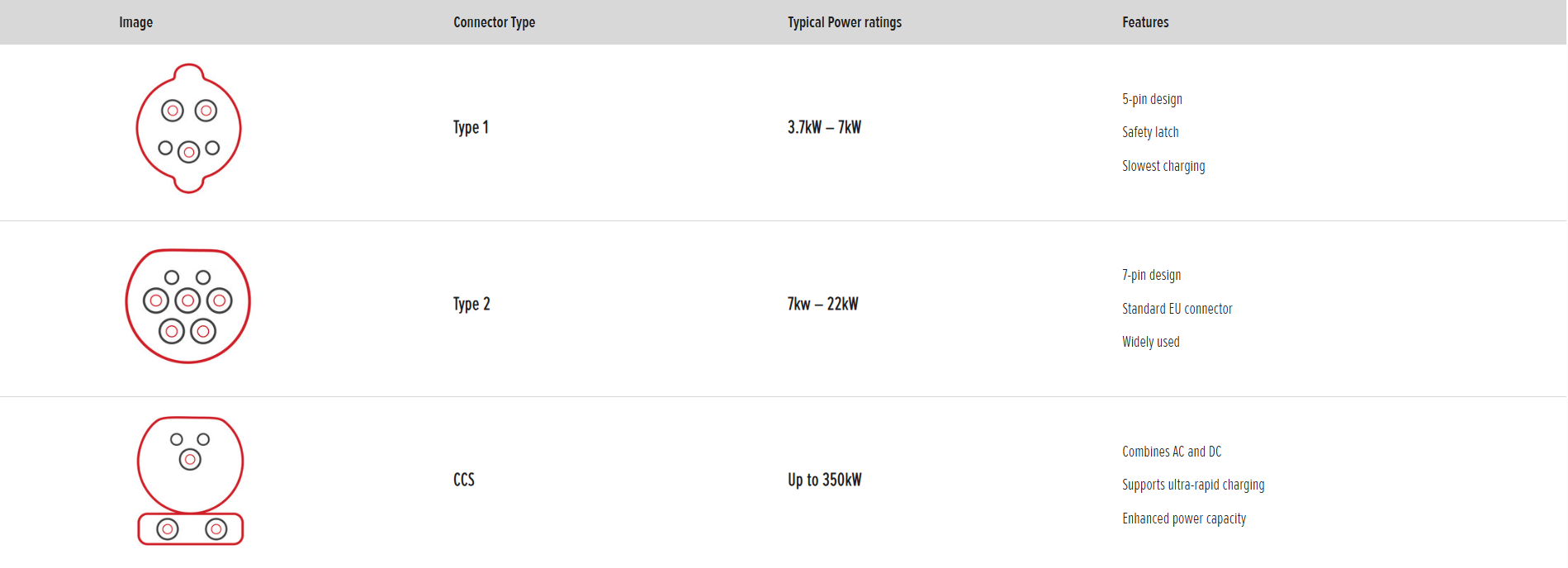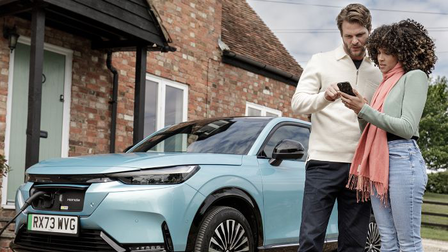Fact checking some common EV misconceptions
When it comes to electric cars, or EVs as they’re more commonly known, there’s a lot of hearsay and myths surrounding them.
Often people hear things third hand from their brother’s neighbour’s friend or such like, and sometimes the comments are outdated or misleading, so let’s tackle some of the most common misconceptions people have.
Honda Electric Cars 1. EV technology is too new to be trusted
1.5million electric vehicle owners in the UK might disagree with this! At Honda we’ve been developing electric cars since the 80's, as part of our strategy for alternative energy and low-pollution vehicles. Trusted by thousands, our electrified vehicles maximise Honda’s renowned engineering and technology to deliver a reliable choice. Whilst the market is awash with new car manufacturers, we’ve been pushing the boundaries for over 75 years, taking the ordinary and making it extraordinary. The e:Ny1 is more than an EV, it’s a Honda EV. It’s not just the greener choice, it’s the smarter one, offering everyday reliability, lower running costs, and innovative technology that fits seamlessly into modern life.
2. The UK’s EV infrastructure doesn’t have enough charging points to cope
Whilst this may have been true years ago, at the end of May 2025 there were 80,998 electric vehicle charging points, across 39,773 charging locations in the UK according to Zapmap. This means there are now more charging locations than there are petrol stations!
3. Home charging is a minefield
Charging at home is the cheapest and most convenient way to charge your EV, but with so many suppliers out there it can be confusing to know who to trust.
To support you on your EV journey Honda has designed e:PROGRESS to make the transition to owning an EV as simple as possible. From sourcing and installing a charger, selecting the right tariff, and scheduling the optimal times to charge your vehicle, e:PROGRESS can save you time, carbon and money.
The intuitive smart app, which is free for the first year, connects to your Honda EV with any charger and tariff, and ensures it's charged at the cheapest and lowest emission times, and ready when you need it.
Whilst installing a home charger offers the most convenient experience, it’s not essential. You can also charge your EV at home using a traditional weatherproof 3-pin socket. Just bear in mind that this method is much slower.
Find out more about e:PROGRESS.
Discover e:Progress 4. Electric cars don’t have a big enough mileage range
Whilst EVs do have a lower range than traditional internal combustion engine cars, the typical range of the e:Ny1 on a single full charge is around 256 miles. With 99% of car journeys in England being under 100 miles, there’s no need for EV range anxiety. Even commuting an hour each way to work is no problem for the e:Ny1.
5. It takes a long time to charge an electric car.
EV charging times vary depending on the size of your car’s battery and the type of charger you use. A home charger, whilst slower than rapid chargers available at public sites across the UK, is often the cheapest and most convenient way to charge your electric car as you can leave it charging overnight and take advantage of cheaper energy prices.
The power rating of the charger determines the speed and time it takes an EV to charge:
107 kWh
28h
15h17m
4h51m
2h
0h40m
83.7 kWh
25h13m
13h20m
4h14m
1h52m
0h37m
77 kWh
23h7m
12h13m
3h53m
1h42m
0h34m
74 kWh
22h13m
11h44m
3h44m
1h38m
0h32m
67 kWh
20h7m
10h38m
3h23m
1h29m
0h29m
6. Charging an EV is expensive
Actually, the EV charging cost vs a petrol car is less. The exact cost to charge your EV will depend on the electricity price of the charging device. Like buying fuel at petrol stations, it normally costs more on the motorway than at supermarkets or at home.
Our intelligent charging app, e:PROGRESS, helps you schedule charging at home for times when your tariff rates are lower, helping to reduce the cost of each charge. Dedicated EV charging tariffs often offer lower off-peak rates, allowing you to charge your EV overnight when the demand for energy on the grid is at its lowest.
To calculate the cost of charging your EV use this formula:
Charge cost (£) = battery size (kWh) × electricity cost (p/kWh)
For example the e:Ny1 has a 68.8 kWh battery
Typical price of a unit of electricity is £0.25**
Cost of charging = 68.8 × 0.25 = £17.20
7. EV batteries don’t last long
Like a lot of EVs, the e:Ny1 is powered by a lithium battery. Typically, you can expect around eight to ten years, or 99,419 miles of use, from an EV. Performance doesn’t suffer much as the battery degrades, but the range may shorten over time.
EV Charging Guide 8. There’s lots of different cables and systems making charging complicated
At first glance it can appear confusing, but it’s really very simple as your Honda EV comes with all the necessary charging cables as standard.
As shown below, in the UK there are 3 types of connectors:

For example, the Honda e:Ny1 has a CCS Combo Type 2 charging port at the front of the car.
This port includes:
• A Type 2 socket for AC charging at home (up to 22 kW, 11 kW from a domestic supply) or at public stations.
• A CCS socket for DC rapid charging at public stations.
Charging is as easy as filling an internal combustion engine car with petrol or diesel. Just open the boot and remove the supplied charging cable from the dedicated space, tucked away underneath the boot floor.
Press the discreet button at the front of the car to open the hidden charging compartment, then open the cover to reveal the 2 charging connectors. Plug in the Honda-supplied cable to your car and the other end to the charger and you’re ready to charge.
9. Servicing will be expensive
Generally EVs require less maintenance than internal combustion engine cars. This is because there are fewer parts inside EVs, making maintenance more straightforward. The average servicing cost of an EV is around 30% less for a full service, compared to a petrol / diesel car. The average cost of servicing for an EV in the first year of ownership is approx. £200, compared to £285 for a petrol / diesel vehicle, although servicing costs can vary.
10. It’s hard to find a charging location when visiting a new area
Definitely not! The e:Ny1’s built in satnav makes it easy to find EV chargers. Plus, in the UK, you’ll never be more than 25 miles from a charging point on major A roads and motorways. You can also use Google Maps to search for charging stations, filtering by connector type and charging speed, whilst a range of EV-specific apps, such as Zapmap, offer real-time availability and network info to find the right charger wherever you’re headed.
Want to know more? Speak to one of our knowledgeable Honda Electric Vehicle experts.**
Call 0345 200 8000
Discover the e:Ny1 and CR-V Plug-in Hybrid
e:Ny1
Spacious, stylish electric SUV
Honda SENSING as standard
Honda CONNECT infotainment system with Android Auto™ and Apple CarPlay®
Includes heated and electrically adjustable front seats, front and rear parking sensors and rear-view camera as standard.
CR-V
Large, premium plug-in hybrid SUV
Easy to charge at home or a public charging point
Zero emission driving range of 50 miles in EV mode
Large battery for longer commutes
Honda SENSING 360 as standard
Features front and rear parking sensors, rear view camera, digital driver’s display, heated front seats and steering wheel as standard.
Related Reading:
* See https://www.honda.co.uk/cars/new/e-ny1-electric-suv/specifications.html for full details.
** Correct as of June 2025
***The Honda e:Ny1 is a battery electric vehicle requiring mains electricity for charging. Zero emissions whilst driving. Electric range figures may not reflect real life driving results, which will depend upon a number of factors including the starting charge of the battery, accessories fitted (post-registration), variations in weather, driving styles and vehicle load.







